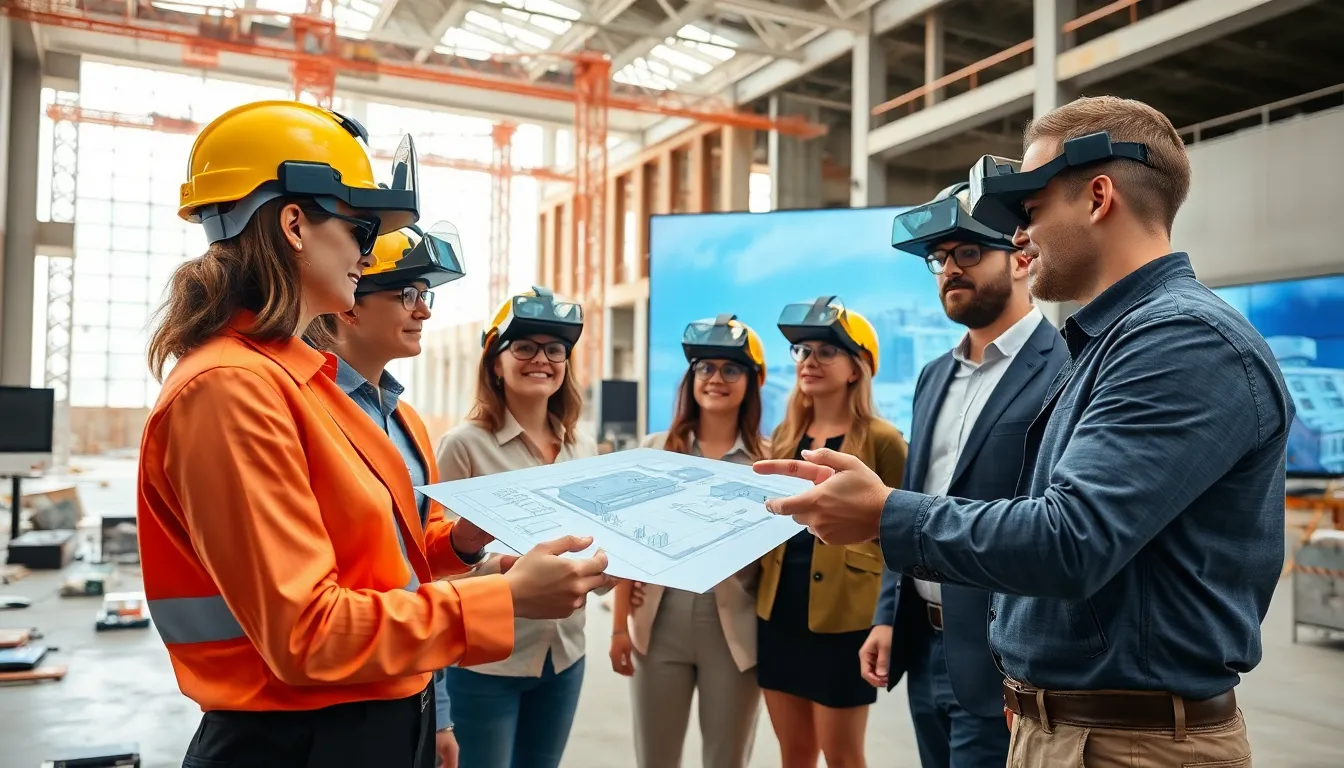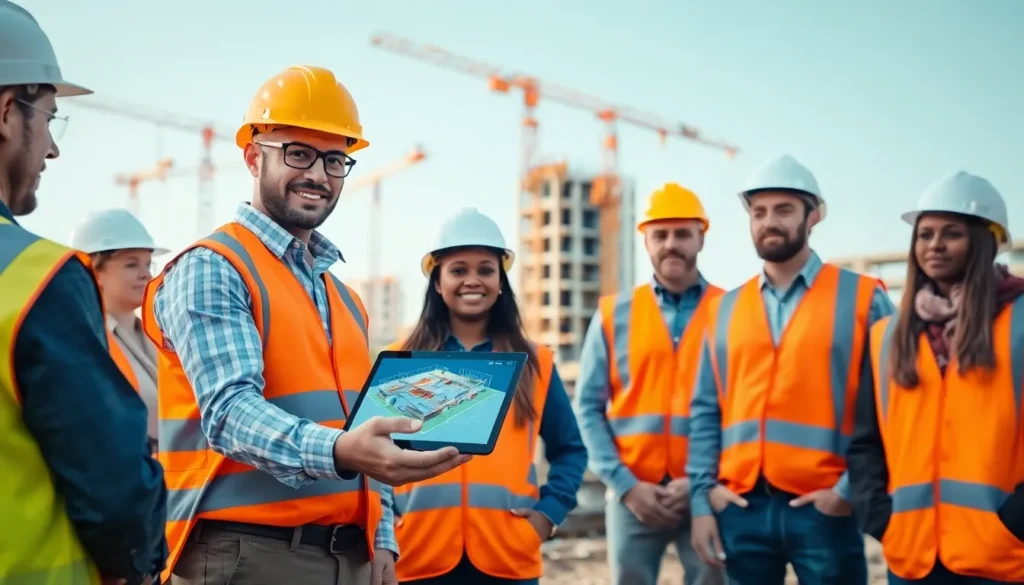Picture this: hard hats, blueprints, and a construction site buzzing with the latest technology. Now, imagine layers of information floating right before your eyes, seamlessly integrated with the physical world. Welcome to the era of augmented reality in construction. This technology is not just some sci-fi fantasy: it’s changing how projects are conceived, designed, and executed. If you’ve ever wondered how construction could get a high-tech makeover, stick around. We’re about to jump into the world of augmented reality, where digital magic meets practical application, and yes, it’s really as cool as it sounds.
Table of Contents
ToggleOverview Of Augmented Reality

Augmented reality (AR) blends digital information with the physical environment, creating an interactive experience for users. Unlike virtual reality, which immerses users in a completely digital world, AR enhances reality by overlaying digital content onto real-life views. Construction professionals now leverage AR technologies to visualize complex projects in real-time, aiding significantly in planning and execution. With AR, workers can capture a clear view of what’s onsite, anticipating potential hiccups before they occur.
Benefits Of Augmented Reality In Construction
The advantages of incorporating augmented reality into construction are substantial. First and foremost, enhanced visualization is a game changer. By providing 3D models directly on site, it bridges the gap between design and execution. Employees often find that referencing digital blueprints in augmented formats drastically reduces misunderstandings.
Second, AR promotes collaboration. Project teams can access shared digital representations, keeping everyone on the same page, no more missed emails or outdated documents. This collaborative approach can lead to significant time savings, reducing project timelines and enhancing overall productivity.
Also, augmented reality can improve safety. With real-time information overlays, workers receive guidance on hazards or changes in the environment. Safety protocols can be visually highlighted, ensuring everyone knows where to tread lightly. Finally, this tech can reduce costs by minimizing errors and cutting down on waste, all invaluable bonuses for any project.
Applications Of Augmented Reality In Construction
Augmented reality finds multiple applications in construction. One of its most prominent uses is in design visualization. Architects can showcase a project before the first brick is laid, allowing stakeholders to visualize the end product vividly.
Another critical application lies in on-site guidance. Workers can receive step-by-step instructions superimposed over their view of the job site. This feature is particularly beneficial for complicated assembly tasks or installations.
Besides, AR can be instrumental during inspections. Inspectors can merge digital models with real-world sites to verify correctness, allowing them to spot discrepancies before they become costly errors. Another area includes worker training: AR provides immersive tutorials, helping new employees become proficient without needing extensive hands-on experience at the get-go.
Challenges And Limitations
Even though its myriad benefits, implementing augmented reality in construction isn’t without challenges. One significant hurdle involves the initial investment. The equipment and software can be costly, raising barriers for smaller firms. Plus, a workforce skilled in this technology is essential, requiring time and resources dedicated to training.
Also, there are concerns about the reliability of AR systems. Construction sites are dynamic environments influenced by weather and other factors: so, maintaining consistent performance can be tricky. Data accuracy is another concern, as outdated models can lead to costly mistakes on site. Even a minor discrepancy can spiral into major rework, undermining the very benefits AR aims to provide.
Future Trends In Augmented Reality
Looking ahead, the future of augmented reality in construction appears promising. Continued advancements in technology will likely result in more affordable and accessible AR solutions. The integration of AR with other technologies, like artificial intelligence and machine learning, could further enhance its functionalities. For instance, AI could help analyze real-time site data paired with AR overlays for predictive maintenance or optimized scheduling.
Also, as remote work environments evolve, so will collaborative tools. Companies might embrace AR to connect teams across distances, allowing real-time collaboration without the need for everyone to be physically present. Expect also to see a surge in mobile AR applications, as smartphones become smarter and more capable of supporting complex AR functionalities.








